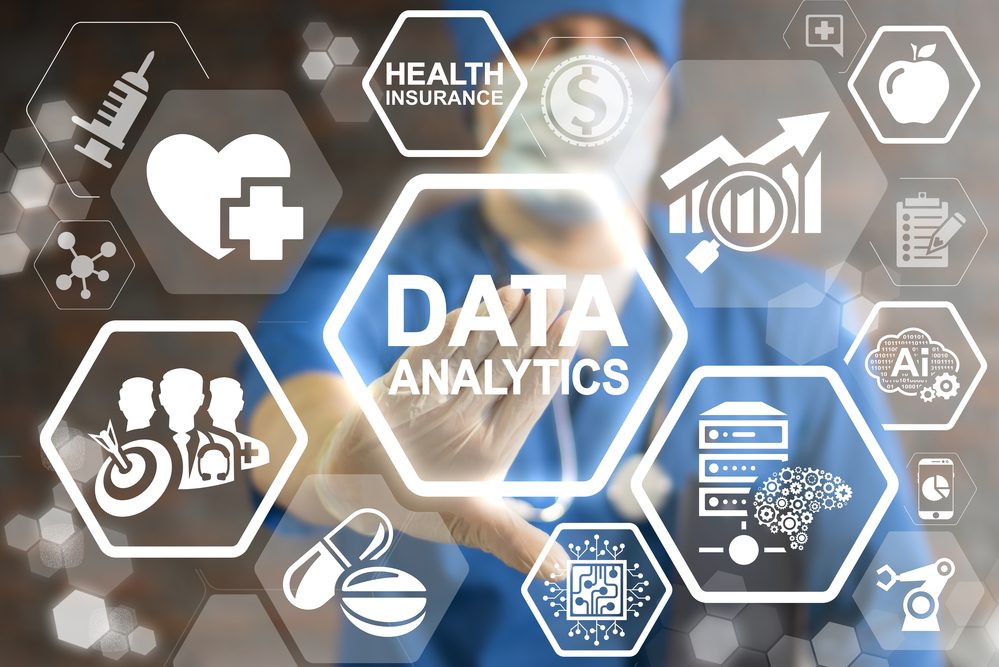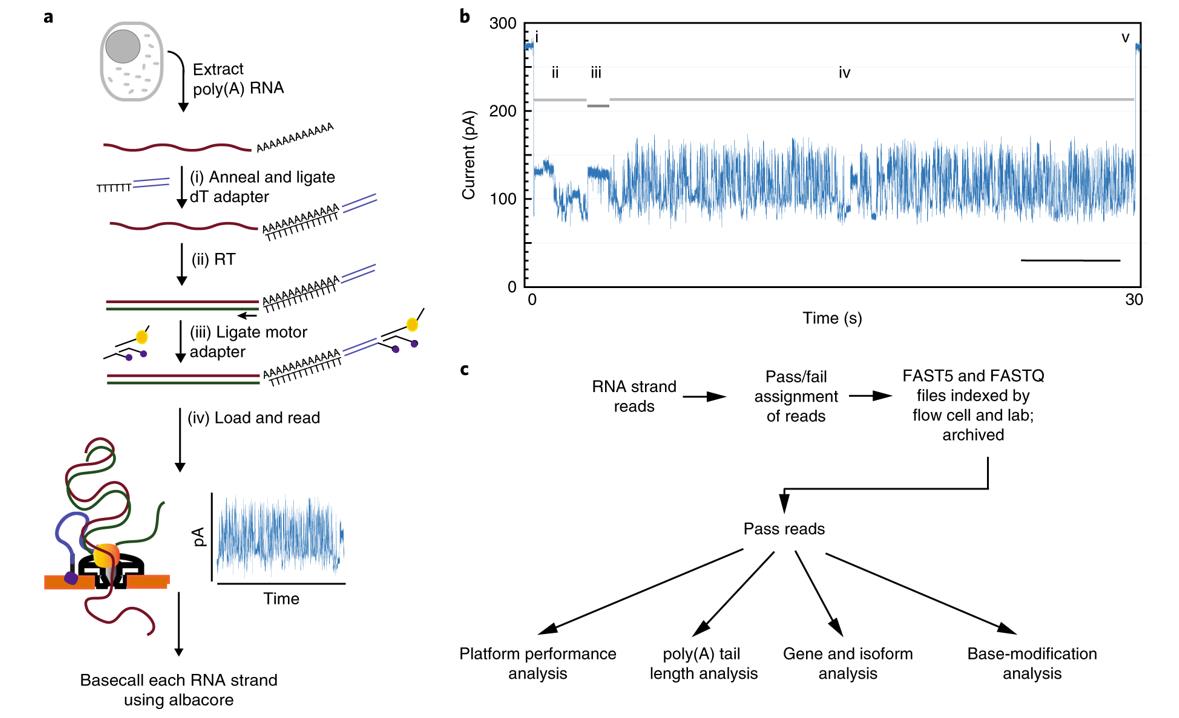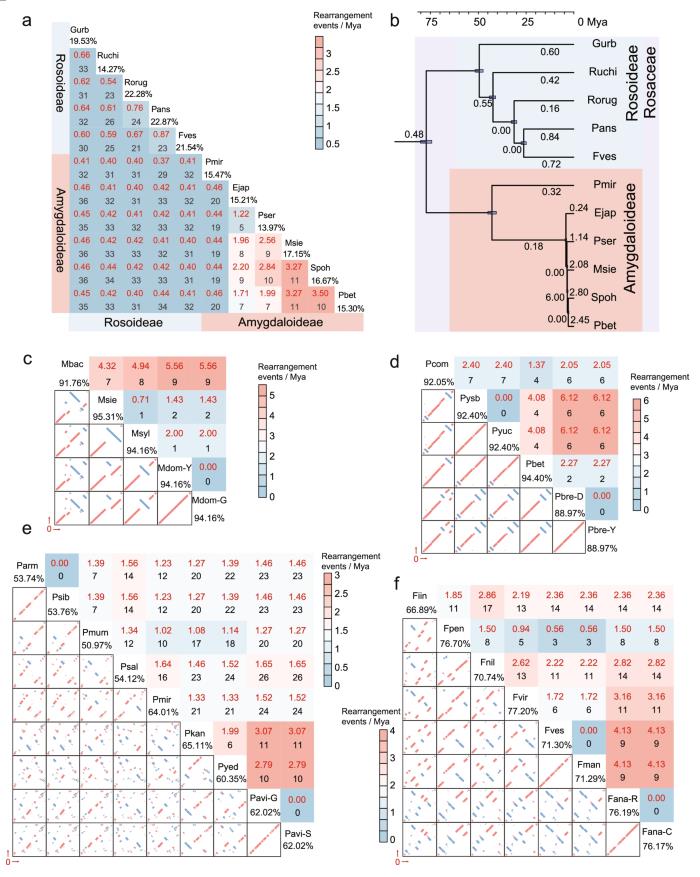1. Introduction
The North America clinical data analytics in healthcare market has seen remarkable growth, driven by the increasing adoption of digital tools and data-driven decision-making in the healthcare industry. In 2023, the market was valued at USD 13.14 billion, reflecting the crucial role that clinical data analytics plays in improving patient outcomes, optimizing healthcare operations, and reducing costs. The market is projected to grow at a compound annual growth rate (CAGR) of 9.9% between 2024 and 2032, reaching an estimated value of USD 32.01 billion by 2032. This growth highlights the expanding reliance on data analytics to drive innovations in personalized medicine, population health management, and clinical decision support.
2. Market Dynamics
Understanding the forces driving, restraining, and shaping the market is critical to predicting its future trajectory.
2.1 Drivers
- Increasing Adoption of Electronic Health Records (EHR): The widespread implementation of EHR systems has been a major catalyst for the growth of clinical data analytics. EHRs store vast amounts of patient data, which can be analyzed to identify trends, predict outcomes, and improve clinical decision-making. The integration of EHRs into healthcare systems allows for real-time access to patient data, facilitating more accurate and timely care.
- Growing Focus on Personalized Medicine: Personalized medicine tailors treatments to individual patients based on their genetic, environmental, and lifestyle factors. Clinical data analytics enables the analysis of large datasets, helping healthcare providers to develop personalized treatment plans that improve patient outcomes. As the healthcare industry shifts towards more individualized care, the demand for sophisticated data analytics tools continues to rise.
- Rising Demand for Data-Driven Decision Making in Healthcare: With the growing complexity of healthcare systems, there is a heightened need for data-driven decision-making. Clinical data analytics provides healthcare professionals with the insights necessary to make informed decisions, reduce errors, and enhance patient care. This demand is further fueled by the increasing complexity of patient cases and the need for efficiency in healthcare delivery.
- Advancements in Big Data Analytics and AI Technologies: The advancements in big data and artificial intelligence (AI) have revolutionized clinical data analytics. AI-powered tools can analyze vast amounts of data quickly, identifying patterns and making predictions that were previously impossible. These technologies are being increasingly integrated into healthcare analytics platforms, enabling more accurate diagnoses, personalized treatments, and efficient resource management.
2.2 Restraints
- High Implementation Costs: Despite the benefits, the implementation of clinical data analytics systems can be expensive. The costs associated with software, hardware, and training can be prohibitive for smaller healthcare providers, limiting market growth. Additionally, ongoing maintenance and updates add to the financial burden.
- Data Privacy and Security Concerns: The handling of sensitive patient data presents significant privacy and security challenges. Breaches can lead to severe consequences, including legal penalties and loss of patient trust. Ensuring compliance with data protection regulations, such as the Health Insurance Portability and Accountability Act (HIPAA), adds another layer of complexity to the adoption of clinical data analytics.
- Complex Regulatory Environment: The regulatory landscape surrounding healthcare data analytics is complex and constantly evolving. Navigating these regulations requires significant resources and expertise, which can be a barrier to entry for new players and a challenge for existing ones.
2.3 Opportunities
- Integration of AI and Machine Learning in Data Analytics: The integration of AI and machine learning into clinical data analytics offers tremendous opportunities. These technologies can enhance predictive analytics, automate routine tasks, and provide deeper insights into patient care. The ongoing development of AI and machine learning algorithms will likely drive further innovation in this space.
- Expansion of Telehealth and Remote Patient Monitoring: The COVID-19 pandemic accelerated the adoption of telehealth and remote patient monitoring. These technologies generate vast amounts of data that can be analyzed to improve patient outcomes and healthcare efficiency. The expansion of telehealth services provides a significant growth opportunity for the clinical data analytics market.
- Growing Investments in Healthcare IT Infrastructure: Governments and private entities are increasingly investing in healthcare IT infrastructure. These investments are aimed at improving data management, interoperability, and analytics capabilities, creating opportunities for market growth. As more healthcare providers upgrade their IT systems, the demand for advanced data analytics solutions is expected to increase.
2.4 Challenges
- Data Integration from Multiple Sources: One of the major challenges in clinical data analytics is integrating data from various sources, such as EHRs, wearable devices, and genomic databases. Ensuring data interoperability and consistency is crucial for effective analytics but can be technically challenging.
- Lack of Skilled Workforce: The shortage of skilled professionals who can manage and analyze complex healthcare data is a significant barrier to the adoption of clinical data analytics. Training and education programs are needed to address this skills gap and ensure that healthcare providers can fully utilize analytics tools.
- Managing the Volume and Complexity of Healthcare Data: The sheer volume of healthcare data generated daily is overwhelming. Managing, storing, and analyzing this data requires sophisticated tools and strategies. Additionally, the complexity of healthcare data, with its varying formats and structures, adds to the challenge of extracting actionable insights.
Get a Free Sample Report with Table of Contents
3. Market Segmentation
The clinical data analytics market in healthcare is segmented based on component, deployment model, application, and end-user. Each segment plays a crucial role in shaping the market landscape.
3.1 By Component
- Software: Software solutions form the backbone of clinical data analytics, providing the tools needed to process and analyze data. These include EHRs, data visualization tools, and predictive analytics platforms.
- Hardware: Hardware components, such as servers and data storage systems, are essential for the infrastructure that supports clinical data analytics. With the increasing volume of data, there is a growing demand for robust and scalable hardware solutions.
- Services: Services include consulting, implementation, maintenance, and support. These services are critical for the successful deployment and operation of clinical data analytics systems, ensuring that healthcare providers can maximize the value of their data.
3.2 By Deployment Model
- On-Premise: On-premise solutions offer healthcare providers control over their data and infrastructure. However, they require significant upfront investment and ongoing maintenance.
- Cloud-Based: Cloud-based solutions are gaining popularity due to their scalability, flexibility, and lower upfront costs. These solutions allow healthcare providers to access analytics tools and data from anywhere, making them ideal for organizations with multiple locations.
3.3 By Application
- Population Health Management: Population health management involves analyzing data from diverse patient groups to identify trends and improve health outcomes. Clinical data analytics plays a critical role in managing population health by enabling proactive care and disease prevention.
- Clinical Decision Support Systems: These systems use data analytics to assist healthcare providers in making evidence-based clinical decisions. By analyzing patient data, clinical decision support systems can suggest appropriate treatments, reducing the risk of errors and improving patient outcomes.
- Precision Medicine: Precision medicine focuses on tailoring treatments to individual patients based on their genetic makeup and other factors. Clinical data analytics enables the analysis of large datasets to identify the most effective treatments for specific patient groups.
- Quality Improvement and Clinical Outcome Analysis: Analytics tools are used to measure and improve the quality of care provided by healthcare organizations. By analyzing clinical outcomes, healthcare providers can identify areas for improvement and implement strategies to enhance patient care.
3.4 By End-User
- Hospitals and Clinics: Hospitals and clinics are the primary end-users of clinical data analytics. These institutions use analytics to improve patient care, streamline operations, and reduce costs.
- Research Institutions: Research institutions utilize clinical data analytics to conduct studies, analyze clinical trials, and develop new treatments. The insights gained from data analytics are crucial for advancing medical research and innovation.
- Insurance Companies: Insurance companies use clinical data analytics to assess risk, determine pricing, and manage claims. By analyzing patient data, insurers can develop more accurate risk models and improve their financial performance.
- Others (Government Agencies, etc.): Government agencies and other organizations use clinical data analytics to monitor public health, develop policies, and allocate resources effectively.
4. Competitive Landscape
The North America clinical data analytics in healthcare market is highly competitive, with several key players driving innovation and growth.
4.1 Overview of Key Market Players
- Altera Digital Health Inc.: Altera Digital Health Inc. is known for its innovative healthcare IT solutions, including clinical data analytics platforms. The company’s focus on improving patient outcomes through data-driven insights has made it a leader in the market.
- Oracle Corporation: Oracle Corporation offers a comprehensive suite of healthcare analytics solutions, including cloud-based platforms. Oracle’s expertise in data management and analytics has positioned it as a key player in the clinical data analytics market.
- IBM Corp.: IBM Corp. is a pioneer in the field of healthcare analytics, leveraging its AI and machine learning capabilities to develop advanced analytics tools. IBM’s Watson Health platform is widely recognized for its ability to analyze large datasets and provide actionable insights.
- Koninklijke Philips N.V.: Koninklijke Philips N.V. offers a range of healthcare solutions, including data analytics platforms. Philips’ focus on integrating analytics with medical devices and imaging systems has made it a leader in the market.
- eClinical Solutions LLC: eClinical Solutions LLC specializes in clinical data management and analytics, offering tools that streamline clinical trials and improve data quality. The company’s solutions are widely used by pharmaceutical companies and research institutions.
4.2 Strategic Initiatives
- Mergers and Acquisitions: Many companies in the clinical data analytics market have pursued mergers and acquisitions to expand their product portfolios and gain a competitive edge. These strategic moves allow companies to leverage synergies and enhance their market presence.
- Partnerships and Collaborations: Partnerships and collaborations are common strategies in the clinical data analytics market. Companies often collaborate with healthcare providers, technology firms, and research institutions to develop innovative solutions and expand their market reach.
- Product Launches and Innovations: Continuous innovation is key to staying competitive in the clinical data analytics market. Companies regularly launch new products and features to meet the evolving needs of healthcare providers and improve patient care.
4.3 SWOT Analysis of Key Players
- Strengths: Established market presence, strong product portfolios, and advanced technologies are common strengths among leading players in the clinical data analytics market.
- Weaknesses: High costs, regulatory challenges, and limited market penetration in certain regions can be potential weaknesses for some companies.
- Opportunities: The growing demand for personalized medicine, telehealth, and AI-driven analytics presents significant opportunities for market expansion.
- Threats: Data privacy concerns, regulatory changes, and intense competition are potential threats that could impact the growth of key players in the market.
5. Regional Analysis
The clinical data analytics market in North America is dominated by the United States and Canada. Each country has its own unique market dynamics and growth potential.
5.1 United States
- Market Share and Growth Analysis: The United States holds the largest share of the North American clinical data analytics market. The country’s advanced healthcare infrastructure, high adoption of digital technologies, and strong focus on innovation contribute to its market dominance.
- Key Trends and Developments: The U.S. market is characterized by the increasing adoption of EHRs, the growth of telehealth, and the integration of AI in healthcare. Government initiatives, such as the Affordable Care Act, have also played a role in driving market growth.
5.2 Canada
- Market Overview and Growth Potential: While smaller in size compared to the U.S., the Canadian market for clinical data analytics is growing steadily. The country’s universal healthcare system, coupled with government support for healthcare innovation, provides a strong foundation for market growth.
- Government Initiatives and Regulations: Canada has implemented various initiatives to promote the adoption of healthcare IT and data analytics. These initiatives, along with favorable regulations, are expected to drive further growth in the Canadian market.
6. Technological Advancements in Clinical Data Analytics
Technological advancements are at the core of the growth and evolution of the clinical data analytics market.
6.1 Role of Artificial Intelligence and Machine Learning
- Predictive Analytics and Early Diagnosis: AI and machine learning are increasingly being used to develop predictive analytics tools that can identify potential health issues before they become critical. These technologies enable early diagnosis and intervention, improving patient outcomes.
- AI in Clinical Decision Support Systems: AI-powered clinical decision support systems provide healthcare providers with real-time, evidence-based recommendations. These systems analyze patient data, clinical guidelines, and medical literature to assist in decision-making, reducing errors and improving care quality.
6.2 Big Data and Its Impact on Healthcare
- Managing and Analyzing Large Datasets: Big data technologies allow healthcare providers to manage and analyze large volumes of data from diverse sources. These technologies enable the extraction of valuable insights that can inform clinical decisions and improve patient care.
- Big Data in Population Health Management: Big data analytics plays a crucial role in population health management by identifying trends and patterns across large patient populations. These insights can be used to design targeted interventions and improve public health outcomes.
6.3 Blockchain in Clinical Data Analytics
- Enhancing Data Security and Privacy: Blockchain technology offers a secure and transparent way to manage healthcare data. By using blockchain, healthcare providers can ensure the integrity and confidentiality of patient data, addressing some of the key privacy concerns associated with clinical data analytics.
- Blockchain’s Role in EHR Management: Blockchain can be used to create a decentralized, tamper-proof system for managing EHRs. This technology ensures that patient records are accurate and accessible while protecting against unauthorized access.
7. Impact of COVID-19 on the Market
The COVID-19 pandemic has had a profound impact on the healthcare industry, including the clinical data analytics market.
7.1 Changes in Healthcare Data Utilization
- Increased Adoption of Remote Monitoring and Telehealth: The pandemic accelerated the adoption of telehealth and remote monitoring technologies, generating vast amounts of data that can be analyzed to improve patient outcomes.
- Shift Towards Data-Driven Healthcare Practices: The need for real-time data during the pandemic highlighted the importance of data-driven decision-making in healthcare. This shift is expected to continue post-pandemic, driving further growth in the clinical data analytics market.
7.2 Challenges Faced During the Pandemic
- Data Overload and Management Issues: The influx of data during the pandemic created challenges for healthcare providers, including data overload and management issues. These challenges underscored the need for advanced analytics tools to handle large datasets effectively.
- Accelerated Demand for Real-Time Analytics: The urgent need for real-time data during the pandemic led to an accelerated demand for analytics solutions. Healthcare providers required immediate insights to make informed decisions, driving the adoption of real-time analytics tools.
8. Future Outlook and Market Projections
The future of the clinical data analytics market in North America looks promising, with significant growth expected over the next decade.
8.1 Expected Market Growth by 2032
The market is projected to reach USD 32.01 billion by 2032, driven by continued advancements in technology, increasing demand for personalized medicine, and the growing importance of data-driven decision-making in healthcare.
8.2 Emerging Trends
- Rise of Precision Medicine: The focus on precision medicine is expected to grow, with data analytics playing a key role in developing personalized treatments based on individual patient data.
- Growth of Predictive Analytics in Healthcare: Predictive analytics is set to become more prevalent in healthcare, enabling providers to anticipate and address potential health issues before they become critical.
8.3 Key Opportunities for Stakeholders
- Expanding into Untapped Markets: There are significant opportunities for companies to expand into untapped markets, such as smaller healthcare providers and emerging regions in North America.
- Leveraging Advanced Analytics for Better Clinical Outcomes: By investing in advanced analytics technologies, healthcare providers can improve clinical outcomes, reduce costs, and enhance patient satisfaction.




